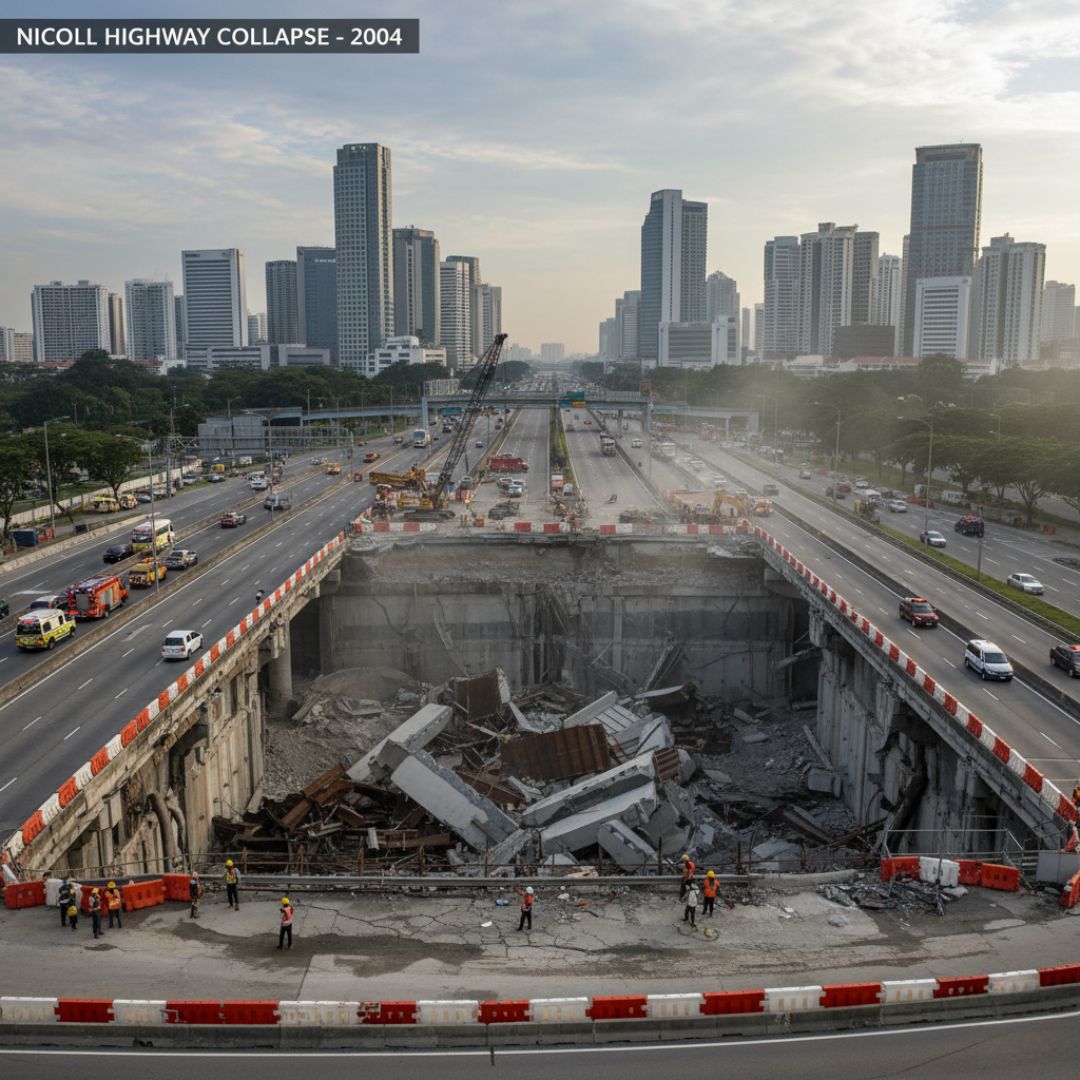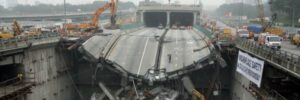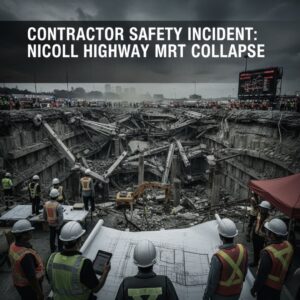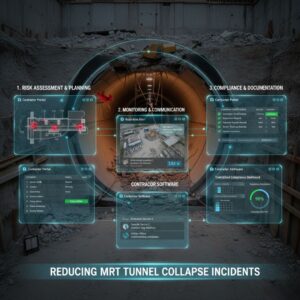Disclaimer
This blog is for informational purposes only. It does not assign blame or provide legal guidance but aims to highlight the importance of contractor safety and the potential role of digital solutions in mitigating risks.
The Nicoll Highway collapse in Singapore in April 2004 remains one of the most notable construction incidents in recent history. During the construction of an MRT tunnel, a failure in the strut-waler support system led to the collapse of the highway. Four workers lost their lives, and three others were injured. While the collapse was primarily a structural failure, it highlights the value of proactive contractor safety management and monitoring in construction projects.
By examining this incident, we can better understand the value of contractor safety practices and how tools like contractor software and contractor portals could help prevent or mitigate similar risks in future projects.
Understanding the Nicoll Highway Collapse
The Nicoll Highway MRT tunnel collapse highlights the challenges of large-scale construction projects. The strut-waler support system, a key structural element, failed during excavation, leading to catastrophic consequences. Although this was a technical failure, the incident emphasizes that comprehensive safety monitoring, regular inspections, and timely communication are essential components of any construction project.
Incidents like the Nicoll Highway collapse demonstrate that even well-planned projects could face serious risks if monitoring and reporting systems are insufficient. Proactive measures, including structured safety protocols, site audits, and risk assessments, could help reduce hazards and protect the workforce. Contractor portals and software could help streamline these processes, ensuring that information is organized and accessible in real time.
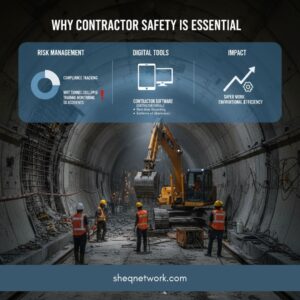
Why Contractor Safety Is Essential
Construction sites involve complex operations with inherent risks. Contractor safety is not just about following regulations—it’s about preventing accidents, safeguarding workers, and maintaining project continuity. The Nicoll Highway collapse illustrates that risks can emerge unexpectedly, and timely intervention is critical.
Digital tools such as contractor software and contractor portals could help manage these risks by tracking compliance, monitoring training, and facilitating real-time reporting. Such tools could help organizations identify potential safety issues before they escalate and provide documented evidence of contractor adherence to safety standards. In this way, technology could help create safer working environments while supporting operational efficiency.
How Contractor Safety Could Be Managed
Managing contractor safety involves multiple layers, from planning and monitoring to communication and documentation. A structured approach could help organizations systematically reduce risks:
- Risk Assessment and Planning: Detailed risk assessments before and during construction could help identify vulnerabilities in structures or processes. Contractor portals could help record and track these risks, ensuring timely action.
- Monitoring and Communication: Continuous site monitoring and real-time reporting could help detect early signs of potential failures. Contractor software could help teams receive instant alerts, maintain logs, and coordinate safety measures effectively.
- Compliance and Documentation: Keeping comprehensive records of contractor activities, inspections, and safety certifications ensures adherence to regulations and safety standards. Contractor portals could help centralize this information, making it easier to review and maintain compliance.
By integrating these practices, organizations could help reduce the likelihood and impact of contractor safety incident, including MRT tunnel collapse.
How Contractor Software and Portals Could Help
Modern construction projects involve numerous contractors, subcontractors, and teams working simultaneously. Managing safety manually is often challenging. Here’s where contractor software and portals could help:
- Centralized Data: Store contractor details, training records, and certifications in a single, secure platform.
- Real-Time Updates: Communicate quickly between on-site teams and project managers to address potential risks promptly.
- Compliance Tracking: Monitor adherence to safety standards, work permits, and legal requirements efficiently.
Using these tools, organizations could help maintain higher safety standards, improve accountability, and proactively manage risks before they lead to incidents similar to the Nicoll Highway collapse.
Lessons for the Future
The Nicoll Highway MRT tunnel collapse teaches that construction risks cannot be ignored. While the failure was structural, contractor safety practices could help identify, mitigate, and respond to hazards more effectively.
By adopting contractor software and contractor portals, organizations could help streamline safety processes, enhance communication, and track compliance in real time. This could help prevent accidents, safeguard workers, and support smoother project execution.
📞 Contact Us:
USA: +1 (941) 337-1671
Ireland: (+353) 21 4536034
UK: (+44) 800 8021092
🚀 Learn how SHEQ Network can support safer workflows!
📧 info@sheqnetwork.com
🔗 Learn more at sheqnetwork.com
📅 Ready for a personalized demo? Book your session here!
